
Larra, also known as mole cricket wasps or mole cricket hunters, is a genus of wasps that prey on various species of mole crickets. They have gained prominence as integrated pest management agents.
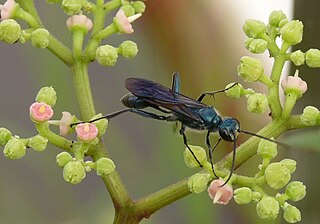
Chalybion is a genus of blue mud dauber wasps in the family Sphecidae. Chalybion species nest in a wide range of natural and artificial cavities such as holes in wood, walls, plant stems, etc., where they typically provision their brood cells with paralyzed spiders. They also reuse old nests of other wasps like Trypoxylon and Sceliphron.
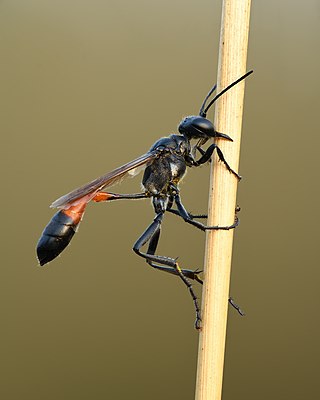
Ammophila is the type genus of the subfamily Ammophilinae of the hunting wasp family Sphecidae. Ammophila is a large and cosmopolitan genus, with over 200 species, mostly occurring in the warmer regions of all continents apart from Antarctica.

Anoplius is a genus of spider wasps in the family Pompilidae called the blue-black spider wasps. It is one of two genera within the tribe Anopliini of subfamily Pompilinae.
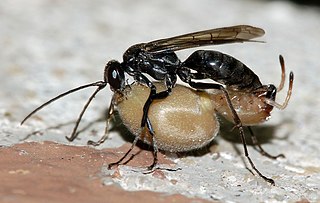
Auplopus is a large genus of spider wasps belonging to the subfamily Pepsinae of the spider wasp family Pompilidae, distributed throughout the world except for Antarctica. Auplopus wasps amputate the legs of their spider prey before transporting it to the nest.
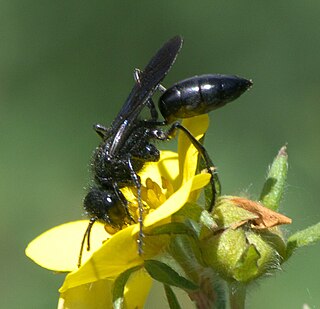
Podalonia is a genus of parasitoidal wasps in the family Sphecidae.

Prionyx is a genus of wasps in the family Sphecidae. They are known to hunt and feed on grasshoppers.

Crabro is a genus of square-headed wasps belonging to the family Crabronidae. There are at least 80 described species in Crabro, found in the Nearctic and Palaearctic (Holarctic).
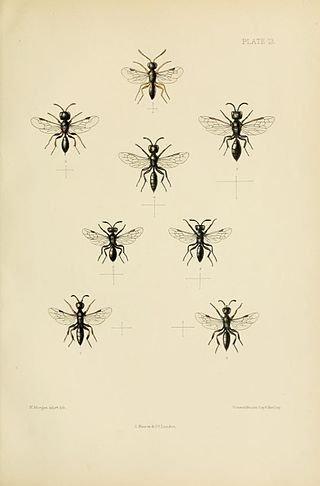
Spilomena is a genus of aphid wasps in the family Crabronidae. The 86 species are found worldwide being represented in the Palearctic, Nearctic, Afrotropical, Neotropical, Australasian, and Indomalayan realms.

Crabronina is a subtribe of square-headed wasps in the family Crabronidae. There are at least 1,300 described species in Crabronina.

Dolichurus is a genus of cockroach wasps in the family Ampulicidae; they are generally found on dead wood, leaf litter, or on tree trunks. There are at least 50 described species in Dolichurus.











